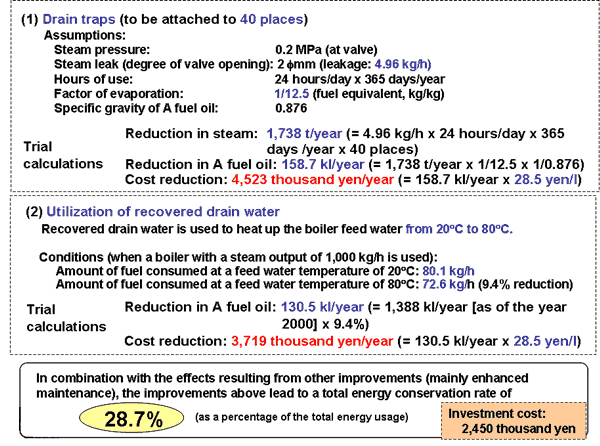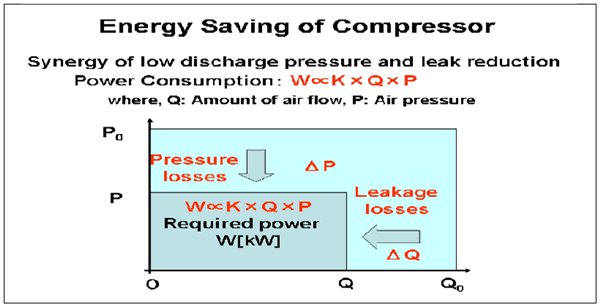Example --- by utility audit "Boiler & Steam system" in Food industry
<Existing problems>
- No steam drain traps are provided.
- Drain water is discharged onto the floor by opening valves slightly.
- No drain water is recovered.

<Improvements and estimated effects>
- Installation of drain traps and drain recovery devices
Drain traps (15 A) are attached to all drainpipes. Drain water is recovered completely by means of a centralized piping system that leads to a recovery tank installed near the boiler room.
This increases the temperature of boiler feed water, allowing energy conservation.



